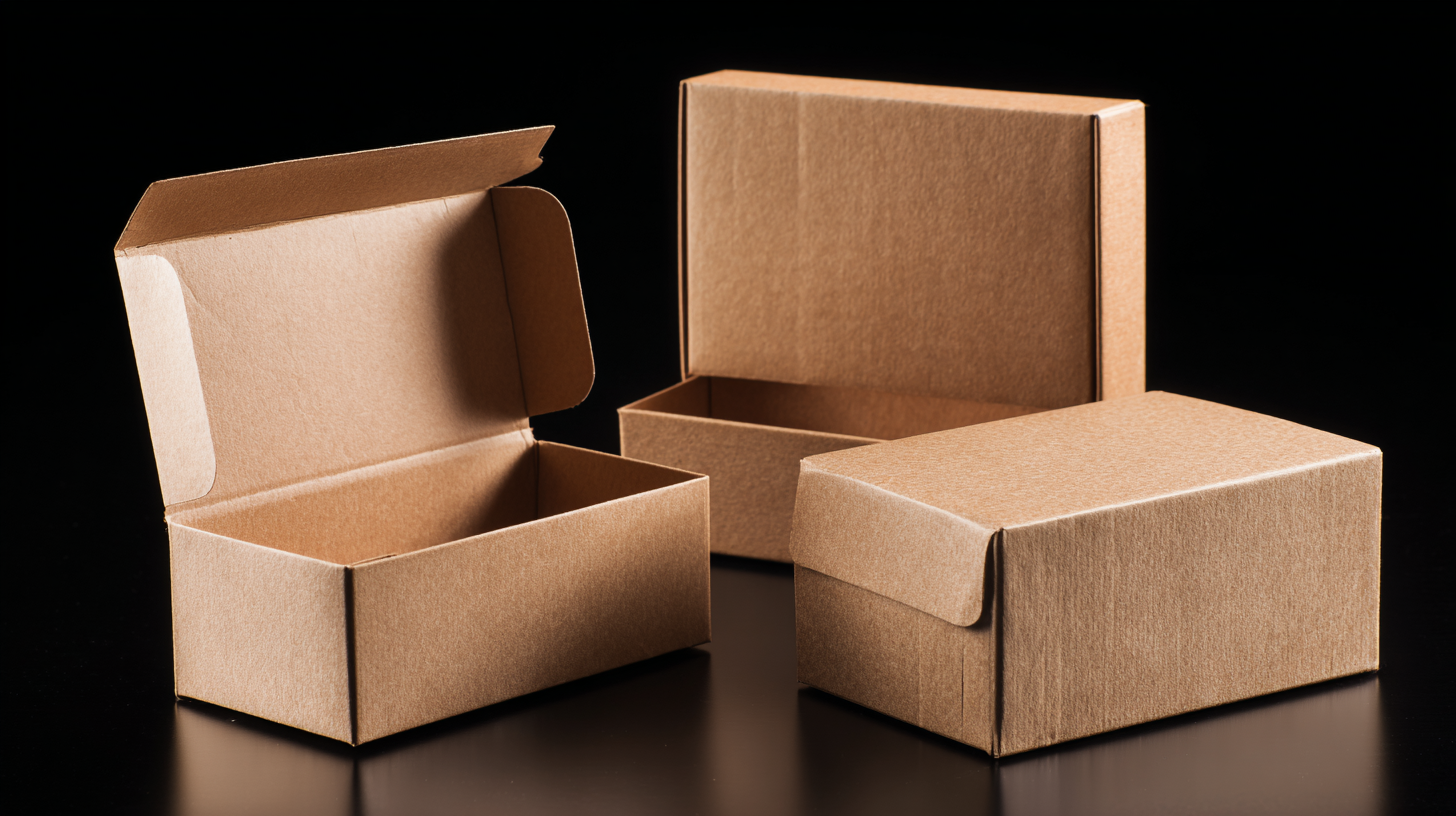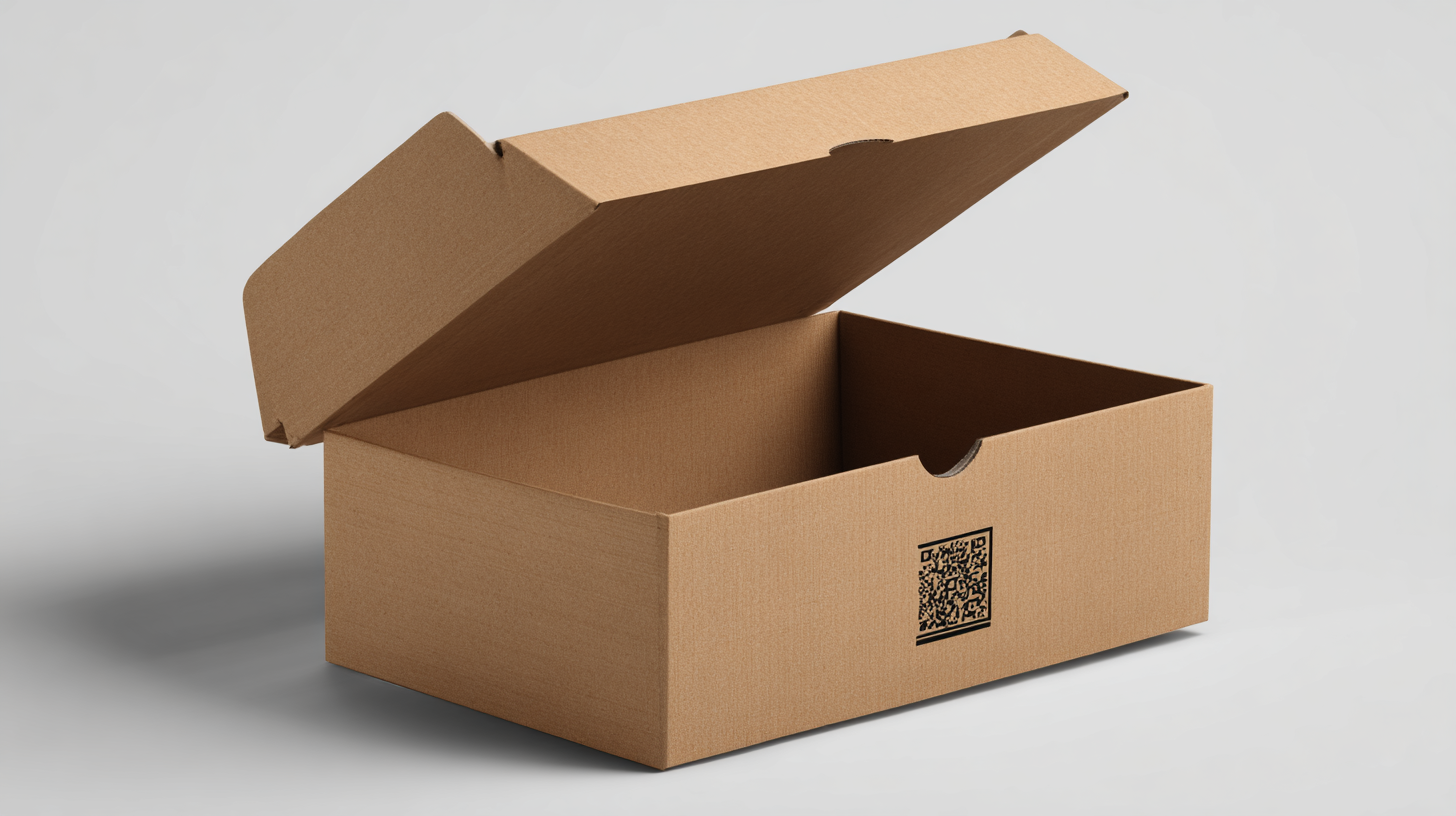Innovative Carton Box Design Strategies to Enhance Consumer Engagement and Sustainability in Packaging
In the rapidly evolving landscape of packaging, innovative carton box design has emerged as a crucial factor in enhancing both consumer engagement and sustainability. According to a report by Smithers Pira, the global sustainable packaging market is projected to reach $500 billion by 2024, driven largely by consumer demand for environmentally friendly solutions. Effective carton box design not only addresses sustainability concerns—such as reducing carbon footprints and minimizing waste—but also plays a pivotal role in branding and consumer experience. Research indicates that over 70% of consumers are more likely to purchase a product that features attractive and functional packaging. By leveraging creative design strategies, brands can not only capture consumer attention but also foster loyalty and promote sustainable practices within the industry. This article explores how innovative carton box design can serve as a powerful tool for both market differentiation and environmental responsibility.

Creative Visual Elements to Capture Consumer Attention in Carton Design
 In today’s competitive market, capturing consumer attention through innovative carton box design is crucial for brand success. Creative visual elements play a significant role in engaging consumers and can make a substantial difference in packaging. Bright colors, unique shapes, and eye-catching graphics can turn an ordinary carton into a powerful marketing tool. By effectively utilizing these design strategies, brands can create a memorable unboxing experience that not only attracts consumers but also builds a lasting brand identity.
In today’s competitive market, capturing consumer attention through innovative carton box design is crucial for brand success. Creative visual elements play a significant role in engaging consumers and can make a substantial difference in packaging. Bright colors, unique shapes, and eye-catching graphics can turn an ordinary carton into a powerful marketing tool. By effectively utilizing these design strategies, brands can create a memorable unboxing experience that not only attracts consumers but also builds a lasting brand identity.
Tips: Incorporate bold typography that enhances readability and reflects the brand's personality. Use illustrations that tell a story or convey the product's purpose, as visual narratives can evoke emotions and create a connection with consumers. Finally, consider eco-friendly inks and materials; sustainability resonates strongly with today's environmentally conscious shoppers, making your carton not just a container but a statement of your brand values.
Focusing on creative visual elements in carton design not only helps in grabbing attention but also communicates the brand's commitment to sustainability. Integrating symbols of environmental responsibility, such as recycling icons or messages about eco-friendly practices, can reinforce the brand's ethos and appeal to socially conscious consumers. This dual approach—capturing attention with striking visuals while promoting sustainability—can greatly enhance consumer engagement and loyalty.
Sustainable Material Options and Their Benefits for Eco-Friendly Packaging
The shift towards sustainable material options in packaging is gaining momentum as consumer demand for eco-friendly solutions grows. A multi-material approach to packaging, which allows the integration of biodegradable and recyclable materials, can significantly enhance sustainability while maintaining product integrity. According to industry insights, the eco-friendly packaging market is projected to hit $500 billion by 2034, showcasing a strong trend driven by consumer awareness and regulatory demands. This transition not only caters to environmental concerns but also opens new avenues for suppliers and customers alike, ensuring that high-value goods are protected without compromising ecological standards.
In the realm of seasonal packaging, particularly around holidays, leveraging sustainable materials makes a substantial impact. Selecting eco-friendly materials for occasion-specific packaging, such as Christmas, can elevate a brand’s appeal while minimizing waste. Research highlights that organizations implementing biodegradable packaging options are positioning themselves for competitive advantage by aligning with consumer preferences for sustainability. As the global food packaging industry grapples with environmental challenges, innovative solutions that embrace sustainable practices will be crucial, ultimately fostering a more responsible and engaging consumer experience.
Interactive Packaging Features that Encourage Consumer Engagement
Interactive packaging features are becoming increasingly essential in enhancing consumer engagement, as brands seek innovative ways to connect with their customers. By incorporating elements such as augmented reality (AR) and QR codes, packaging can transform the unboxing experience into an interactive journey. For instance, a consumer scanning a QR code on a carton box might access a video demonstrating product usage, receive exclusive discounts, or even participate in brand-related games. Such features not only enrich the consumer experience but also create lasting emotional connections between the brand and its customers.
Another avenue for interactive packaging is through tactile elements and personalized designs that invite consumers to touch, feel, and even modify the packaging. Brands can introduce features such as customizable carton designs, where consumers can alter the artwork or message on the box, creating a sense of ownership. Additionally, eco-friendly materials that change texture or color in response to temperature or touch can enhance the sensory experience while emphasizing sustainability. These engaging packaging strategies not only attract eco-conscious consumers but also encourage a deeper interaction with the product, fostering loyalty and advocacy in the process.
Innovative Carton Box Design Strategies to Enhance Consumer Engagement and Sustainability in Packaging
| Design Feature | Description | Sustainability Impact | Consumer Engagement Factor |
|---|---|---|---|
| QR Code Integration | Includes a QR code for scanning to access interactive content. | Promotes digital engagement; reduces paper usage by providing digital info. | High; encourages customers to engage via smartphones. |
| Reusable Packaging | Designs that encourage consumer to reuse the packaging for different purposes. | Significantly reduces waste; promotes circular economy. | Medium; appeals to environmentally conscious consumers. |
| Interactive Augmented Reality (AR) | Use of AR to provide an immersive experience when the package is scanned. | Encourages responsible disposal and recycling tips through AR content. | Very High; creates a unique and memorable consumer experience. |
| Minimalist Design | Simplified packaging with fewer materials and printing. | Reduces resource usage; easy to recycle. | Medium; clarity in design enhances user experience. |
| Customizable Packaging | Allows consumers to personalize packaging with their own designs. | Encourages the reuse of packaging by promoting ownership. | High; fosters a deeper connection between the product and consumer. |
Leveraging Technology for Personalization in Carton Box Design
The rise of e-commerce has transformed consumer expectations, making personalization in packaging design a pivotal strategy for brands seeking to enhance engagement. According to a recent report by McKinsey, personalized packaging can boost product visibility and consumer connection, with 70% of consumers expressing a preference for brands that provide tailored experiences. This trend is notably significant in carton box design, as innovative technology allows brands to incorporate unique elements such as QR codes and AR features that can lead to interactive unboxing experiences.
Tips: Consider utilizing digital printing techniques for carton boxes that enable small batch customizations. This approach not only enhances personalization but can also reduce waste, aligning with sustainability goals. Additionally, integrating social media prompts on packaging can encourage consumers to share their unboxing experiences online, further fostering community engagement.
Moreover, leveraging data analytics enables brands to better understand consumer preferences and modify design elements accordingly. A study by Deloitte highlights that 80% of consumers are more likely to engage with brands that utilize data-driven personalization strategies. Brands should not underestimate the power of consumer feedback, using it as a key tool to refine their carton box designs to create more meaningful connections with their audience.

Effective Use of Color and Typography to Enhance Brand Recognition in Packaging
The effective use of color and typography in packaging plays a crucial role in enhancing brand recognition and consumer engagement. According to a 2023 report by the Packaging Innovation Institute, brands that effectively use specific color palettes can increase consumer recall by up to 80%. This highlights the importance of color psychology in branding, where colors evoke emotions and influence purchasing decisions. For instance, vibrant colors can capture attention while softer tones may convey elegance and sustainability, aligning with modern consumer values.
Typography also has a significant impact on brand perception. A study found that 95% of consumers consider typography to be a key factor in brand identity, with distinct fonts helping to distinguish products on crowded shelves. This underscores the necessity for brands to not only select a compelling font but also ensure consistency across all packaging materials. By integrating innovative design strategies that leverage both color and typography, brands can create a lasting impression, foster consumer loyalty, and reflect their commitment to sustainability in their packaging efforts.
Innovative Packaging Strategies: Consumer Engagement and Sustainability
Related Posts
-

How to Choose the Right Boxes Supplies for Your Business Needs
-

Why Creative Boxes Are Revolutionizing Packaging in the E Commerce Industry
-

What is the Importance of Choosing the Right Shipping Boxes for Your Home
-

Emerging Trends in Packaging Supplies Boxes at the 2025 China Import and Export Fair by Industry Analysis
-

Unlocking Opportunities: Creative Packaging Boxes at China Import and Export Fair 2025
-

What is the Importance of Custom Design Shipping Boxes for Your Business
